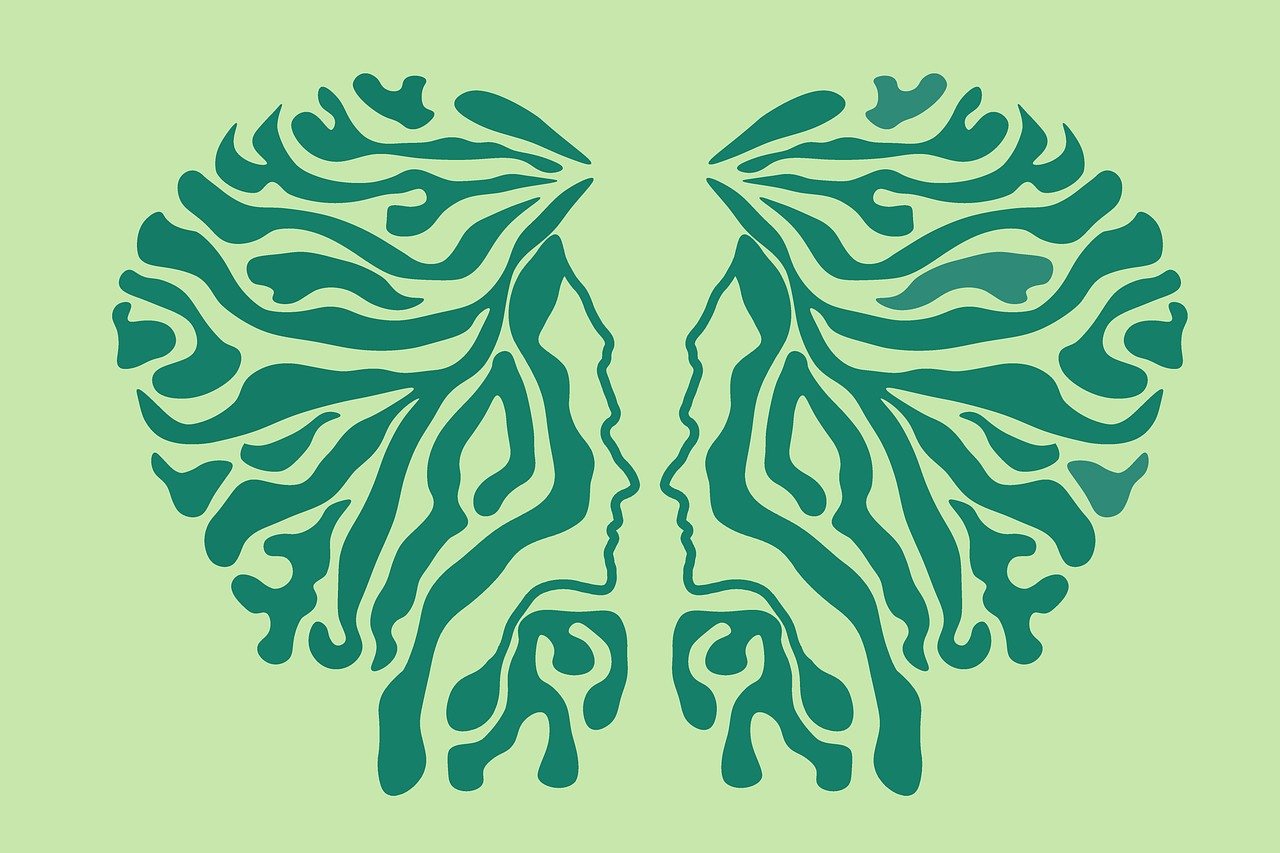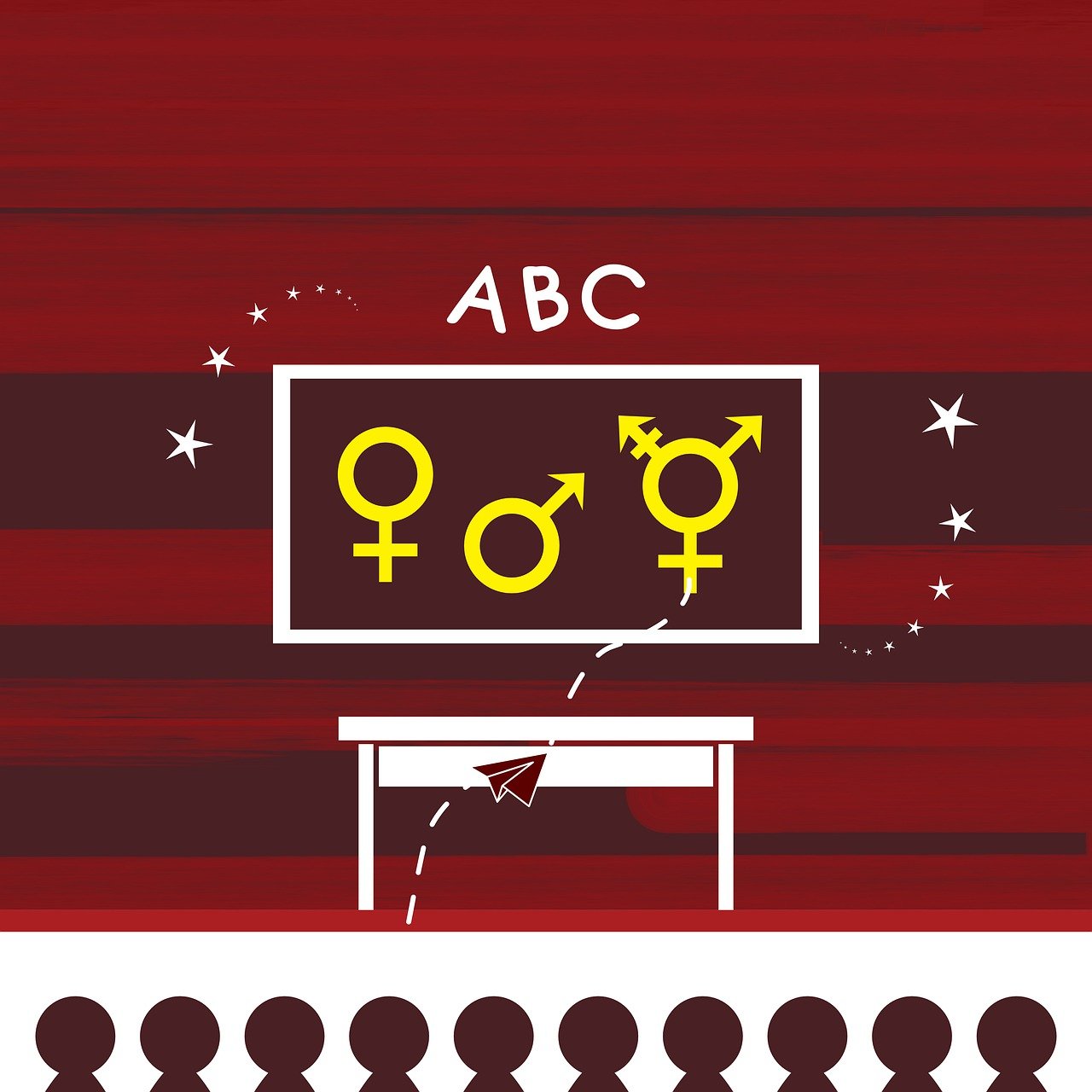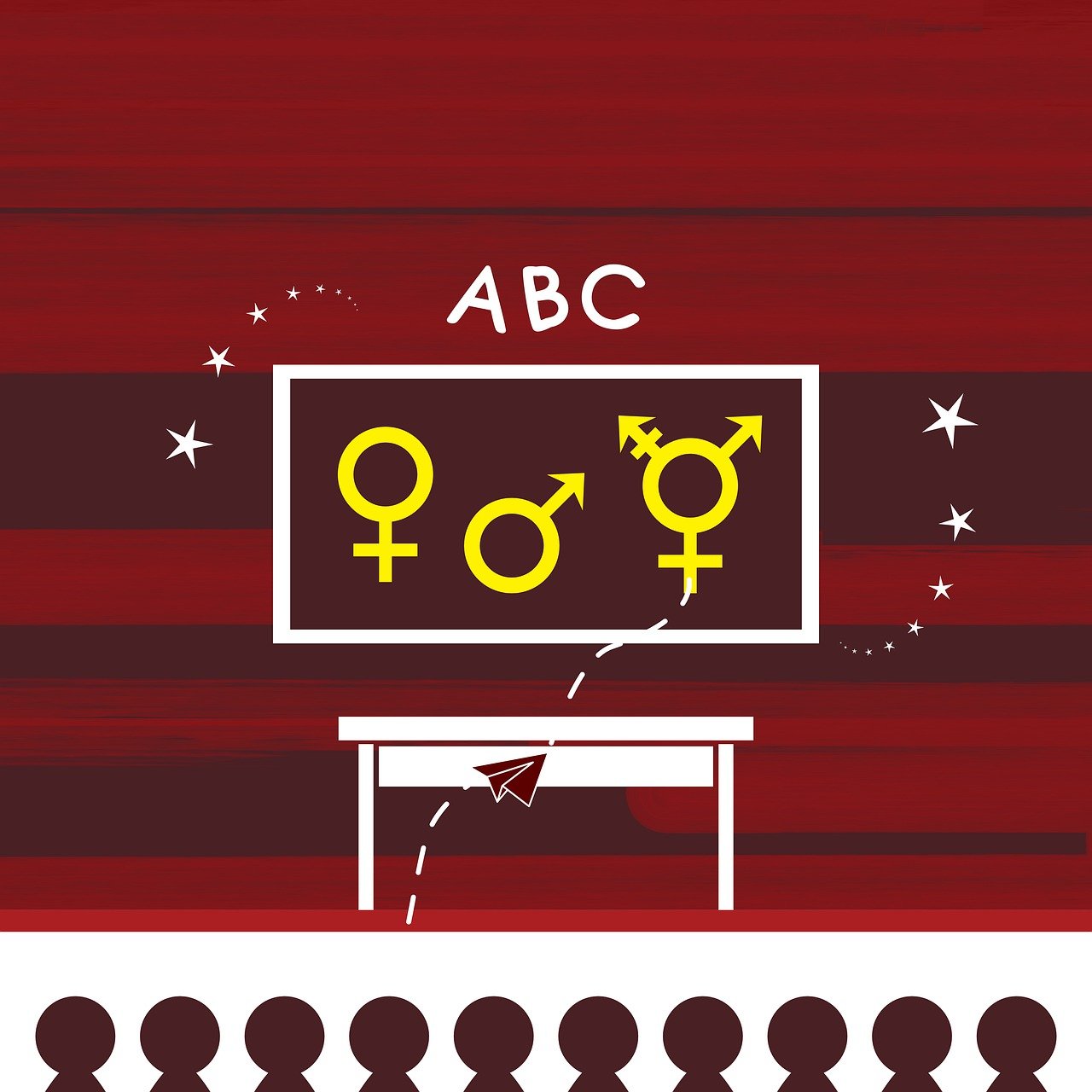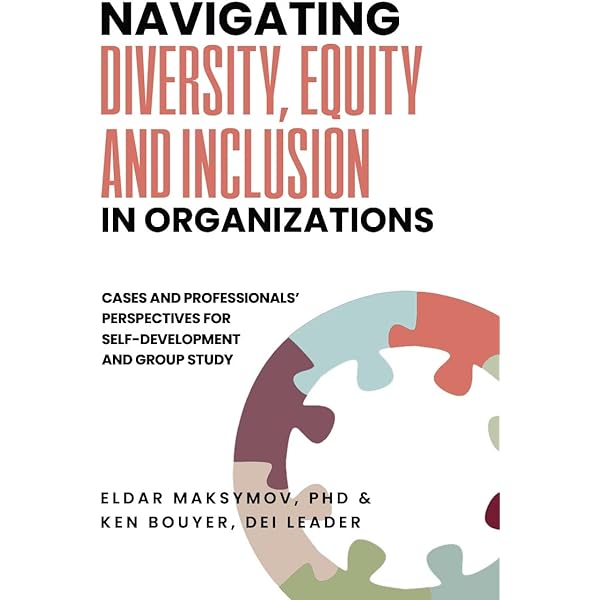Table of Contents
- Definition
- Inclusivity
- Improved Learning Outcomes
- Global Citizenship
- Self-Reflection
- Develop Cultural Awareness
- Promote Inclusive Curriculum
- Create an Inclusive Classroom Environment
- Foster Inclusive Pedagogy
- Encourage Dialogue
- Be Mindful of Language
- Address Bias and Stereotypes
- Collaborate with Colleagues
- Seek Feedback
Today’s classrooms are increasingly diverse, reflecting the multicultural and globalized nature of our society. In this vibrant tapestry of cultures, educators play a vital role in fostering inclusivity, understanding and respect among students of varied backgrounds. This article delves into the importance of cultural competence in teaching and provides strategies for navigating diversity in the classroom.
Embracing Cultural Competence: Navigating the Mosaic of Modern Classrooms
In today’s classrooms, the kaleidoscope of diversity has become a defining feature. The educational landscape is a vibrant tapestry of cultures, languages and traditions, mirroring the multicultural and globalized nature of our society. Within this dynamic and ever-evolving environment, educators emerge as the cornerstone of fostering inclusivity, understanding and respect among students from a myriad of backgrounds. This article seeks to delve deeper into the significance of cultural competence in teaching and provides actionable strategies for educators to navigate and thrive within this rich diversity.
The Cultural Competence Imperative
Cultural competence is not merely an admirable trait for educators; it is an imperative. In a world where students come from various cultural, ethnic and linguistic backgrounds, teachers must equip themselves with the skills and awareness necessary to bridge the gaps that can often exist between these diverse experiences. Beyond the moral and ethical responsibility to create equitable learning environments, cultural competence enhances educational outcomes and prepares students for a globalized workforce.
Building Bridges, Not Barriers
To cultivate cultural competence, educators must first acknowledge their own biases and preconceptions. Self-reflection and an open mindset are foundational. It’s essential to recognize that cultural competence is not about being an expert in every culture but rather about the willingness to learn, adapt and empathize.
Inclusive Curriculum Design: One of the most effective ways to promote cultural competence is through the curriculum. Teachers can diversify their teaching materials to include diverse voices, perspectives and histories. This not only validates the experiences of students from different backgrounds but also broadens the horizons of all students, promoting a richer understanding of the world.
Empathy and Active Listening: Effective communication is at the heart of cultural competence. Educators should actively listen to their students’ stories, concerns and experiences. This fosters trust and helps identify potential challenges or areas where support may be needed.
Cultural Awareness Training: Many schools and institutions offer cultural awareness training for educators. These programs can be invaluable in providing teachers with the tools and knowledge needed to navigate cultural differences sensitively.
Promoting Inclusive Classroom Discussions: Encourage open and respectful dialogue in the classroom. Create a safe space where students feel comfortable sharing their perspectives and experiences, allowing for constructive discussions that promote empathy and understanding.
Cultivating a Global Mindset
Cultural competence is not a static skill but a lifelong journey of growth and learning. Educators must continually seek opportunities for professional development and self-improvement in this area. Moreover, as our world continues to evolve and become increasingly interconnected, cultural competence is no longer an optional skill for educators—it is a fundamental requirement for success in the classroom and beyond.
In conclusion, as the diversity of our classrooms continues to evolve, educators play a pivotal role in fostering inclusivity, understanding and respect among students of varied backgrounds. Cultural competence is not a trend but a necessity for modern teaching and it’s a journey worth embarking on for the betterment of our students and society as a whole. By embracing this imperative and implementing the strategies outlined here, educators can help shape a future where our classrooms truly reflect the beautiful mosaic of our globalized world.
To expand your knowledge on this subject, make sure to read on at this location: T-SEL Competencies: Relationship Skills – Social and Emotional …
Definition
Cultural competence refers to the ability to interact effectively and respectfully with individuals from diverse cultural backgrounds. It involves recognizing, understanding and valuing cultural differences and adapting one’s teaching practices to be inclusive and relevant to all students.
Cultural competence is a vital skill in today’s interconnected world, transcending the boundaries of mere tolerance to embrace genuine understanding and respect for individuals hailing from diverse cultural backgrounds. It encompasses a multifaceted approach that involves not only recognizing and acknowledging cultural differences but also valuing and celebrating them as rich sources of strength and wisdom.
At its core, cultural competence is about breaking down the barriers of ignorance and bias. It requires educators to embark on a journey of self-reflection and learning, fostering an awareness of their own cultural perspectives and biases. By gaining insights into their own cultural identities and assumptions, educators are better equipped to recognize and challenge stereotypes and prejudices that may inadvertently creep into their teaching practices.
Cultural competence also involves actively seeking to understand the cultural backgrounds of their students. This entails listening to their stories, learning about their traditions and appreciating the nuances of their experiences. By doing so, educators not only gain a deeper appreciation for the diverse tapestry of their students but also create an atmosphere of trust and respect in the classroom.
The true power of cultural competence lies in its capacity to inform teaching practices. Educators who are culturally competent are adept at adapting their instructional methods to be inclusive and relevant to all students. They recognize that a one-size-fits-all approach to education is ineffective, as students from different cultural backgrounds may have varying learning styles, preferences and needs.
Incorporating culturally relevant content and perspectives into the curriculum is one way educators can make learning more inclusive. By integrating diverse voices and experiences, educators provide students with a well-rounded education that reflects the complexity of the world they live in. This not only validates the experiences of students from diverse backgrounds but also broadens the horizons of all students, fostering empathy and a global perspective.
Furthermore, cultural competence extends beyond the curriculum into classroom interactions and communication. It involves creating a safe and welcoming environment where students feel valued and respected, regardless of their cultural backgrounds. Educators should be mindful of their language, gestures and behavior, avoiding unintentional microaggressions and ensuring that all students have an equal voice in the classroom.
In essence, cultural competence is not just a checkbox on an educator’s to-do list; it’s a lifelong commitment to inclusivity and respect. It’s a continuous journey of self-improvement and growth, where educators strive to become better advocates for their students. Ultimately, cultural competence is a cornerstone of effective teaching, ensuring that every student, regardless of their cultural background, has the opportunity to thrive and succeed in the classroom and beyond.
Explore this link for a more extensive examination of the topic: Navigating learning and teaching in expanding culturally diverse …

Inclusivity
It ensures that all students feel welcome, respected and valued in the classroom, creating an inclusive learning environment.
Creating an inclusive learning environment goes far beyond just ensuring that all students feel welcome, respected and valued in the classroom; it is the foundation upon which educational excellence and equity are built. This commitment to inclusivity is a profound acknowledgement of the diversity that exists among students and their unique needs, backgrounds and perspectives.
In an inclusive classroom, every student’s voice is not only heard but celebrated. It’s a place where differences are embraced as strengths, where students from various cultural, linguistic and socioeconomic backgrounds come together to learn from one another. Inclusivity fosters a rich tapestry of experiences and insights that enrich the educational journey for everyone involved.
Moreover, inclusivity extends to students with diverse learning styles and abilities. It acknowledges that each student may have unique strengths and challenges and it seeks to provide a supportive and adaptable learning environment. Differentiated instruction, individualized accommodations and a commitment to accessibility are key components of an inclusive approach, ensuring that every student has the opportunity to succeed.
Inclusive classrooms also prioritize social and emotional well-being. They recognize that students’ mental health and emotional states can significantly impact their ability to learn. Teachers in inclusive environments prioritize not only academic growth but also the social and emotional growth of their students. They create a safe and nurturing space where students can express their thoughts, feelings and concerns without fear of judgment.
Furthermore, inclusivity equips students with essential life skills. It promotes empathy, tolerance and a broader worldview. Students learn to appreciate diverse perspectives, practice active listening and engage in constructive dialogue. These skills are not only crucial for success in the classroom but also for functioning in an increasingly diverse and interconnected world.
Inclusive classrooms also prepare students to become responsible and engaged citizens. By learning in an environment that respects and values differences, students are more likely to carry these principles into their communities and beyond. They become advocates for social justice, equity and inclusivity, actively contributing to a more harmonious and fair society.
In conclusion, creating an inclusive learning environment is not just a noble aspiration; it is an essential pillar of modern education. It recognizes and celebrates diversity, supports students with diverse needs, prioritizes social and emotional well-being and equips students with valuable life skills. Ultimately, it is the embodiment of the belief that every student has the right to a quality education and the opportunity to thrive in a nurturing and inclusive community.
Explore this link for a more extensive examination of the topic: Cultural Competence: An Important Skill Set for the 21st Century

Improved Learning Outcomes
Students are more likely to engage and succeed academically when their cultural backgrounds and experiences are acknowledged and integrated into the curriculum.
Recognizing and integrating students’ cultural backgrounds and experiences into the curriculum is not just a matter of diversity and inclusion; it’s a powerful educational strategy that can profoundly impact student engagement and academic success. When educational institutions acknowledge and embrace the rich tapestry of their student body, they create an environment where students feel valued, understood and motivated to excel.
One of the key benefits of incorporating students’ cultural backgrounds is the creation of a more relevant and relatable learning experience. When the curriculum includes examples, perspectives and materials that resonate with students’ cultural identities, it becomes more meaningful and accessible. Students can see the connections between their own experiences and the subject matter, making learning both relatable and engaging.
Moreover, integrating cultural diversity into the curriculum promotes a sense of belonging. Students from underrepresented backgrounds often feel marginalized when their cultural heritage is overlooked or ignored. However, when their cultural backgrounds are acknowledged and celebrated, they are more likely to feel included and valued within the academic community. This sense of belonging is a powerful motivator that can boost students’ confidence and commitment to their studies.
Incorporating cultural diversity also broadens students’ horizons and fosters a deeper understanding of the world around them. Exposure to different cultures, traditions and perspectives cultivates open-mindedness and empathy. It encourages students to challenge stereotypes and biases, promoting a more inclusive and harmonious society.
Furthermore, when students see their cultural backgrounds integrated into the curriculum, they are more likely to develop a positive self-identity. They are proud of their heritage and feel a sense of agency in shaping their own educational journey. This positive self-identity can have a profound impact on their self-esteem and motivation to succeed academically.
Incorporating cultural diversity also prepares students for the globalized world they will encounter beyond their educational journey. In today’s interconnected society, cultural competence is a valuable skill. Students who have been exposed to diverse perspectives are better equipped to navigate and thrive in multicultural environments, whether in their future careers or personal lives.
Effective integration of cultural diversity into the curriculum requires thoughtful planning and collaboration among educators. It involves selecting diverse and representative materials, inviting guest speakers from different backgrounds and creating opportunities for cross-cultural discussions and projects. It also means providing professional development for teachers to ensure they are equipped with the tools and knowledge to facilitate culturally responsive teaching.
In conclusion, acknowledging and integrating students’ cultural backgrounds and experiences into the curriculum is not just a matter of diversity; it’s a strategic educational approach that enhances engagement and academic success. It creates a more relevant and relatable learning experience, promotes a sense of belonging, fosters open-mindedness, nurtures positive self-identity and prepares students for a diverse and interconnected world. When students’ cultural backgrounds are celebrated and embraced, the educational journey becomes more enriching, empowering and inclusive for all.
To expand your knowledge on this subject, make sure to read on at this location: Developing the Cultural Awareness Skills of Behavior Analysts – PMC

Global Citizenship
Cultural competence equips students with the skills and attitudes needed to thrive in an interconnected world.
Cultural competence is a multifaceted skill set that goes beyond the ability to appreciate and understand different cultures. It equips students with the essential skills and attitudes needed to not only thrive but also contribute positively in an increasingly interconnected world. Here’s an extended exploration of this idea:
Global Citizenship: Cultural competence is a cornerstone of global citizenship. It encourages students to view themselves as members of a global community, fostering a sense of responsibility toward the well-being of others worldwide. This mindset goes beyond geography and nationality, emphasizing the importance of addressing global challenges such as climate change, poverty and human rights.
Effective Communication: In an interconnected world, effective communication transcends language barriers. Cultural competence helps students become adept at communicating with people from diverse backgrounds. This includes not only linguistic skills but also non-verbal communication, active listening and the ability to interpret nuances in conversation, all of which are crucial for building strong relationships and resolving conflicts.
Empathy and Perspective-Taking: Cultural competence nurtures empathy and the ability to see the world from different perspectives. It encourages students to appreciate the unique experiences, values and beliefs of others. This empathy is essential for promoting tolerance, reducing prejudice and fostering a more inclusive and harmonious society.
Problem-Solving and Adaptability: An interconnected world is marked by constant change and complexity. Cultural competence equips students with the problem-solving skills and adaptability needed to thrive in diverse environments. They learn how to navigate unfamiliar situations, resolve cultural misunderstandings and effectively respond to challenges in a global context.
Business and Career Advancement: In the professional realm, cultural competence is a valuable asset. As businesses expand globally and work with international partners and clients, employees who possess cultural competence are better equipped to build relationships, negotiate successfully and contribute to the success of their organizations on a global scale.
Diversity and Inclusion Advocacy: Cultural competence also inspires students to become advocates for diversity and inclusion. They recognize the importance of creating inclusive spaces where people of all backgrounds feel valued and heard. Students who are culturally competent are more likely to challenge discrimination and promote social justice.
Preservation of Cultural Heritage: Cultural competence isn’t just about understanding others; it also involves preserving and celebrating one’s own cultural heritage. Students are encouraged to embrace and share their own cultural backgrounds, contributing to the richness of the global cultural tapestry.
Conflict Resolution: Cultural competence is instrumental in preventing and resolving conflicts in a multicultural world. It helps individuals and communities find common ground, mediate disputes and work toward mutually beneficial solutions.
In summary, cultural competence is a vital skill set for students in our interconnected world. It empowers them to become global citizens who are effective communicators, empathetic individuals, adaptable problem solvers and advocates for diversity and inclusion. These skills not only benefit individuals in their personal and professional lives but also contribute to building a more peaceful, understanding and cooperative global society. Cultivating cultural competence in education is an investment in a brighter and more harmonious future for all.
Explore this link for a more extensive examination of the topic: Nurturing Students as Global Citizens: Embracing Cultural Diversity …

Self-Reflection
Start by reflecting on your own cultural identity and biases. Understanding your own cultural perspective is the first step in recognizing and respecting the diversity of others.
Initiating a journey towards cultural awareness and inclusivity begins with introspection and self-reflection. Expanding upon this idea, here’s a more comprehensive exploration of the steps and benefits involved:
Self-Examination: Start by critically examining your own cultural identity, beliefs and biases. Reflect on your upbringing, experiences and the cultural influences that have shaped your worldview. Identifying your biases is essential because it allows you to acknowledge them and work towards mitigating their impact on your interactions with others.
Cultivating Empathy: Self-reflection fosters empathy. As you gain a deeper understanding of your own cultural background, you become more empathetic towards others who may have different cultural perspectives. Empathy is the cornerstone of building meaningful relationships and fostering respect.
Active Listening: Cultivate active listening skills when engaging with people from diverse backgrounds. Listening attentively to their experiences and perspectives demonstrates respect and an eagerness to understand their point of view. It also allows you to learn from their unique experiences.
Education and Awareness: Educate yourself about various cultures, customs and histories. A commitment to lifelong learning can help broaden your cultural horizons and dispel stereotypes or misconceptions. Being well-informed is key to approaching cultural diversity with respect and sensitivity.
Seeking Different Perspectives: Surround yourself with diverse voices and perspectives. Engage in conversations, attend cultural events or read literature and watch films from different cultures. Exposure to diverse viewpoints enriches your understanding and challenges preconceived notions.
Challenging Stereotypes: Actively challenge stereotypes and prejudices. Recognize that individuals cannot be defined solely by their cultural background. Each person is a complex individual with unique experiences, beliefs and aspirations.
Cultural Sensitivity: Practice cultural sensitivity in your interactions. This includes respecting cultural traditions, customs and norms, even if they differ from your own. Sensitivity demonstrates an acknowledgment of the value of cultural diversity.
Openness to Feedback: Be open to feedback and correction. If someone points out a cultural misunderstanding or insensitivity in your behavior, take it as an opportunity to learn and grow. A willingness to change and improve is a sign of respect.
Cross-Cultural Relationships: Building genuine relationships with people from diverse backgrounds can be a powerful way to learn about their culture. It’s essential to approach these relationships with authenticity, a genuine desire to connect and a readiness to learn.
Teaching Cultural Awareness: If you’re an educator or in a position of influence, consider incorporating cultural awareness and diversity education into your curriculum or workplace training. Promoting these values can have a lasting impact on future generations and organizational cultures.
Advocacy for Inclusivity: Advocate for inclusivity and diversity in your community, workplace or educational institution. Be a voice for change and actively support initiatives that promote equity and respect for all cultures.
Global Citizenship: Embrace the concept of global citizenship, recognizing that we are all part of an interconnected world. This mindset encourages you to take responsibility for promoting peace, justice and understanding across cultures.
Ultimately, self-reflection and cultural awareness are ongoing processes. They require humility, open-mindedness and a commitment to valuing the richness of human diversity. By taking these steps, you not only enrich your own life but also contribute to a more inclusive and harmonious world.
Looking for more insights? You’ll find them right here in our extended coverage: Developing the Cultural Awareness Skills of Behavior Analysts – PMC

Develop Cultural Awareness
Learn about the cultures represented in your classroom. Read books, attend cultural events and engage with colleagues from diverse backgrounds. This knowledge will help you better understand your students’ experiences and perspectives.
Understanding the diverse cultures within your classroom is not just a noble pursuit; it’s a foundational aspect of effective teaching that fosters empathy, inclusivity and stronger teacher-student relationships. Here’s how delving into the rich tapestry of cultural backgrounds can significantly enrich your teaching and create a more harmonious learning environment:
Cultural Sensitivity: By actively learning about the cultures represented in your classroom, you become more culturally sensitive. You gain insights into customs, traditions and values that may be different from your own. This awareness enables you to create a classroom atmosphere that respects and celebrates these differences.
Cultural Relevance: Tailoring your teaching to incorporate cultural elements from your students’ backgrounds can make the curriculum more relatable and engaging. When students see their culture acknowledged and integrated into the learning experience, they are more likely to feel valued and motivated to participate.
Empathy and Inclusivity: Understanding your students’ cultural experiences allows you to empathize with their perspectives and challenges. This empathy fosters a sense of belonging and inclusivity, making students more comfortable expressing themselves and contributing to class discussions.
Cultural Exchange: Encourage cultural exchange within the classroom. Invite students to share aspects of their culture, whether it’s through presentations, food, music or art. This not only enriches the learning experience but also promotes a sense of community and mutual appreciation among students.
Global Perspective: Exposure to diverse cultures broadens your students’ horizons, fostering a global perspective. It helps them appreciate the interconnectedness of the world and the value of cultural diversity in an increasingly globalized society.
Conflict Resolution: Understanding cultural differences can help you navigate and mediate conflicts that may arise in the classroom due to cultural misunderstandings. You can facilitate open and respectful dialogues to resolve issues and promote mutual understanding.
Resource Sharing: Engage with colleagues from diverse backgrounds to exchange teaching strategies, resources and insights. Collaborating with educators who have different cultural perspectives can lead to innovative teaching approaches that benefit all students.
Cultural Competence: Developing cultural competence is a lifelong journey. Continuously seek opportunities to learn about and from diverse cultures, as well as stay updated on cultural shifts and developments. This ongoing commitment ensures that your teaching remains culturally responsive.
Parent-Teacher Relationships: Understanding your students’ cultures can also enhance your relationships with their parents or guardians. It shows that you respect their cultural values and are invested in their child’s success, fostering a positive partnership between home and school.
Incorporating cultural awareness into your teaching not only enriches the educational experience but also equips students with the skills they need to thrive in an increasingly diverse and interconnected world. It creates an inclusive and nurturing environment where every student feels seen, valued and empowered to excel academically and personally.
If you’d like to dive deeper into this subject, there’s more to discover on this page: Developing the Cultural Awareness Skills of Behavior Analysts – PMC

Promote Inclusive Curriculum
Review and adapt your curriculum to include diverse voices, perspectives and contributions. Ensure that students see themselves reflected in the material and that they are exposed to a variety of cultural narratives.
Reviewing and adapting the curriculum to embrace diversity is a transformative step that can profoundly enrich the educational experience. This commitment goes beyond mere representation; it seeks to foster a deep understanding and appreciation of the multitude of voices, perspectives and contributions that shape our world. Here’s an in-depth exploration of why this approach is invaluable:
Inclusivity: A diverse curriculum creates an inclusive learning environment where every student feels valued and represented. It sends a powerful message that all voices and experiences are essential and contribute to the tapestry of human knowledge.
Empathy and Understanding: Exposure to diverse voices fosters empathy and understanding. Students learn to appreciate different viewpoints, cultures and lived experiences, nurturing a sense of global citizenship and interconnectedness.
Cultural Competence: A curriculum that reflects diversity cultivates cultural competence. Students gain the skills and knowledge needed to navigate a multicultural world, fostering respect and effective communication across cultural boundaries.
Critical Thinking: Diverse perspectives encourage critical thinking. Students are encouraged to question assumptions, challenge stereotypes and analyze complex issues from multiple angles, strengthening their analytical and problem-solving skills.
Complex Problem-Solving: A diverse curriculum often explores complex, real-world problems that require multifaceted solutions. This approach prepares students to tackle the intricate challenges they will encounter in their personal and professional lives.
Preparation for Global Citizenship: In an increasingly interconnected world, global citizenship is paramount. A curriculum that embraces diversity equips students to engage with global issues, such as climate change, social justice and human rights, as informed and compassionate global citizens.
Counteracting Bias: Diverse content counteracts bias and prejudice. It challenges stereotypes and misconceptions, promoting a more equitable and just society by encouraging critical examination of societal norms.
Identity Affirmation: When students see themselves reflected in the curriculum, it affirms their identities and validates their experiences. This affirmation can boost self-esteem, motivation and a sense of belonging.
Inspiration and Role Models: Diverse curriculum introduces students to a range of role models and inspirational figures from various backgrounds. It can ignite students’ aspirations and empower them to pursue their passions and dreams.
Richer Discussions: Diverse perspectives lead to richer classroom discussions. Students bring unique insights, stories and experiences to the conversation, creating a dynamic and intellectually stimulating learning environment.
Real-World Relevance: A diverse curriculum connects classroom learning to real-world relevance. It helps students understand the complexities of contemporary issues and equips them with the knowledge and skills to address these challenges effectively.
Lifelong Learning: Encountering diversity in education fosters a passion for lifelong learning. Students develop a curiosity about the world and a desire to explore new ideas, cultures and perspectives throughout their lives.
In conclusion, reviewing and adapting the curriculum to embrace diversity is a powerful commitment to nurturing empathetic, culturally competent and critically thinking individuals. It prepares students not only to thrive in our diverse world but also to actively contribute to a more inclusive and equitable society where all voices are heard and valued.
Should you desire more in-depth information, it’s available for your perusal on this page: Education & Scholarship

Create an Inclusive Classroom Environment
Set ground rules that promote respect and open-mindedness. Encourage students to share their cultural traditions, stories and experiences. Celebrate cultural diversity through classroom decorations and displays.
Establishing ground rules that foster respect and open-mindedness in the classroom is a foundational step toward creating an inclusive and culturally rich learning environment. These rules serve as the guiding principles that enable students to engage in meaningful dialogues and interactions while celebrating the diverse tapestry of cultures within the classroom.
Respect is the cornerstone of a harmonious classroom community. Teachers can set ground rules that emphasize the importance of respecting each student’s background, beliefs and perspectives. When students feel valued and respected for who they are, they are more likely to engage openly and constructively in discussions about culture and diversity.
Open-mindedness is equally essential. Encourage students to approach discussions about cultural traditions, stories and experiences with curiosity and a willingness to learn. Emphasize the idea that diversity is an opportunity for growth, enriching the learning experience for everyone. By fostering open-mindedness, teachers create an environment where students are more likely to challenge their own assumptions and broaden their horizons.
Moreover, creating opportunities for students to share their cultural traditions, stories and experiences can be a transformative educational experience. It not only allows students to connect on a personal level but also broadens their understanding of the world. Sharing personal narratives can help break down stereotypes and foster empathy, as students gain insight into the lived experiences of their peers.
Classroom decorations and displays can visually represent and celebrate cultural diversity. Teachers can create a welcoming atmosphere by incorporating decorations, artwork and materials from various cultures. This not only reinforces the value of diversity but also serves as a constant reminder of the rich tapestry of human experiences that enrich our collective journey.
Furthermore, celebrating cultural diversity should extend beyond special occasions or heritage months. It should be an integral part of the classroom culture year-round. This can be achieved by integrating diverse perspectives and voices into the curriculum, selecting literature and resources that reflect various cultures and inviting guest speakers or experts from different backgrounds to share their knowledge.
In essence, setting ground rules that promote respect and open-mindedness and celebrating cultural diversity are essential components of an inclusive and culturally enriched classroom. By fostering an environment where every student’s voice is valued and heard, teachers create a vibrant and dynamic learning space where students can grow not only academically but also as individuals who appreciate and respect the world’s rich cultural mosaic.
Should you desire more in-depth information, it’s available for your perusal on this page: Embracing classroom cultural diversity: Innovations for nurturing …

Foster Inclusive Pedagogy
Adapt your teaching methods to accommodate diverse learning styles and preferences. Use a variety of instructional strategies, such as group work, discussions and multimedia resources, to engage all students.
In the pursuit of effective teaching, recognizing and accommodating diverse learning styles and preferences is paramount. Education isn’t one-size-fits-all and students come to the classroom with a wide range of backgrounds, abilities and ways of processing information. To truly engage all students and facilitate meaningful learning experiences, it’s crucial to embrace a multifaceted approach that encompasses various instructional strategies.
One key aspect of adapting teaching methods is understanding the different learning styles that exist among students. Some are visual learners, who grasp concepts better through images and diagrams, while others are auditory learners, who benefit from verbal explanations and discussions. Kinesthetic learners thrive when they can engage with hands-on activities, while reading and writing learners prefer text-based materials. By recognizing and respecting these differences, educators can tailor their instruction to suit the needs of each group.
A valuable strategy in this endeavor is incorporating a diverse range of instructional methods into the classroom. Group work, for example, fosters collaboration, critical thinking and social skills, making it an excellent choice for many students. Discussions encourage active participation, where students can express their thoughts and engage with peers to deepen their understanding of the subject matter. Multimedia resources, such as videos, interactive simulations and online platforms, appeal to visual and auditory learners and can make complex concepts more accessible.
Furthermore, providing choices within assignments and projects allows students to select tasks that align with their strengths and preferences. This not only promotes a sense of autonomy but also encourages students to take ownership of their learning. When students are personally invested in their education, they are more likely to be motivated and engaged.
Incorporating technology into the classroom is another powerful tool for accommodating diverse learning styles. Educational software, online resources and digital platforms can be customized to cater to different learning preferences. This flexibility ensures that students have access to materials and activities that resonate with their individual styles.
In conclusion, adapting teaching methods to accommodate diverse learning styles and preferences is the cornerstone of effective education. By offering a rich tapestry of instructional strategies, educators create an inclusive learning environment where all students have the opportunity to thrive. The ultimate goal is not only to impart knowledge but to foster a love for learning and equip students with the skills they need to succeed in an increasingly diverse and complex world.
For additional details, consider exploring the related content available here preparing our youth for an inclusive and sustainable world | oecd

Encourage Dialogue
Facilitate open and respectful discussions about cultural topics and issues. Create a safe space where students can ask questions, share their experiences and learn from one another.
Fostering open and respectful discussions about cultural topics and issues is a profound way to enrich the educational experience and promote inclusivity. In a world where diversity is a defining characteristic, it’s essential to create a classroom environment that not only acknowledges but celebrates the richness of varied cultures, perspectives and backgrounds.
A key component of this endeavor is establishing a safe and welcoming space where students feel comfortable sharing their thoughts and experiences. It’s about creating an atmosphere where individuals from diverse backgrounds can openly express themselves without fear of judgment or prejudice. In such an environment, students are not just passive learners; they become active participants in a shared dialogue.
These discussions offer a platform for students to ask questions, seek clarification and deepen their understanding of different cultures. They provide an opportunity for students to explore the nuances and complexities of cultural issues, moving beyond stereotypes and assumptions. In this process, students learn not only from their teacher but also from one another, gaining a more comprehensive and empathetic perspective of the world.
Furthermore, these discussions nurture empathy and cultural competence. Students learn to appreciate the significance of diversity and recognize the importance of cultural sensitivity in a globalized society. They develop the skills to navigate cultural differences with respect and grace, both within the classroom and in their interactions beyond its walls.
Additionally, open discussions about cultural topics pave the way for critical thinking. Students are encouraged to analyze, question and evaluate their own beliefs and biases. They learn to approach cultural issues with a discerning eye, considering multiple viewpoints and weighing evidence. This fosters a habit of mind that transcends cultural contexts, empowering students to engage critically with a wide range of topics in their academic and personal lives.
In conclusion, facilitating open and respectful discussions about cultural topics is not just about creating informed and culturally competent individuals; it’s about nurturing a sense of belonging, empathy and critical thinking. It’s about equipping students with the skills and mindset needed to thrive in a diverse and interconnected world, where cultural understanding and respect are essential. By fostering these discussions, educators are not only shaping their students’ academic growth but also nurturing their development as responsible and compassionate global citizens.
Looking for more insights? You’ll find them right here in our extended coverage: Embracing classroom cultural diversity: Innovations for nurturing …

Be Mindful of Language
Be aware of the language you use and its potential impact on students from different cultural backgrounds. Avoid jargon, idioms or expressions that may be unfamiliar or exclusionary.
The language we use as educators holds immense power, not only in conveying information but also in shaping the inclusive and welcoming atmosphere of the classroom. Being aware of the language we employ and its potential impact on students from diverse cultural backgrounds is an essential aspect of effective teaching and fostering an equitable learning environment.
One of the primary considerations when it comes to language is avoiding the use of jargon, idioms or expressions that may be unfamiliar or exclusionary to students. Educational jargon, which is often second nature to educators, can be a barrier for students who are not yet familiar with these terms. Simplifying language and providing clear explanations help ensure that all students, regardless of their cultural background or prior knowledge, can comprehend and engage with the material.
Idioms and expressions that are deeply rooted in a specific culture can be particularly confusing for students from different backgrounds. For example, phrases like “it’s raining cats and dogs” or “hit the books” may not have direct equivalents in other languages or cultures. Using such idiomatic expressions without explanation can leave students feeling bewildered and excluded. To promote clarity and inclusivity, educators should either avoid these expressions or take the time to explain their meanings when they arise.
Additionally, it’s vital to be mindful of the connotations and potential stereotypes associated with certain words or phrases. Some words may carry unintended biases or cultural insensitivity. Educators should strive to use language that respects and celebrates diversity, avoiding any language that might perpetuate stereotypes or prejudices.
Incorporating culturally sensitive language and diverse perspectives into the curriculum is another crucial aspect. Texts and materials should reflect a variety of cultural backgrounds and experiences, ensuring that students can see themselves represented in the learning materials. This not only fosters a sense of belonging but also broadens students’ horizons by exposing them to different worldviews and perspectives.
Furthermore, educators can encourage students to share their own experiences and cultural insights in the classroom. This not only enriches the learning environment but also validates the diverse backgrounds and identities of students. It sends a message that every student’s voice is valued and contributes to the collective learning experience.
In conclusion, being aware of the language we use as educators is a fundamental aspect of creating an inclusive and equitable learning environment. Avoiding unfamiliar jargon, idioms or expressions and providing clear explanations when needed, promotes comprehension and engagement for all students. Using language that is respectful and free from stereotypes, as well as incorporating diverse perspectives into the curriculum, ensures that the classroom is a place where every student feels valued, understood and empowered to learn and succeed.
To expand your knowledge on this subject, make sure to read on at this location: 9.3 Navigating the Diversity Landscape – College Success | OpenStax

Address Bias and Stereotypes
Challenge and address bias or stereotypes that may arise in the classroom. Use such moments as opportunities for education and growth.
Confronting and mitigating bias or stereotypes that surface in the classroom is not just a responsibility; it’s an essential aspect of fostering a inclusive and equitable learning environment. Such moments of tension and misunderstanding can indeed serve as powerful catalysts for education and growth, both for students and educators.
Open Dialogue: Encourage open dialogue when bias or stereotypes emerge. Create a safe space for students to express their thoughts, questions and concerns. This open conversation allows individuals to voice their perspectives and engage in constructive discussions.
Critical Thinking: Use these moments as opportunities to teach critical thinking skills. Challenge students to examine the origins and validity of stereotypes, providing them with the tools to deconstruct bias and prejudice in a rational and informed manner.
Cultural Competence: Incorporate discussions on cultural competence and sensitivity into the curriculum. Educate students about the diverse backgrounds and experiences of their peers, fostering empathy and understanding.
Empathy Building: Encourage students to put themselves in others’ shoes. This exercise in empathy helps students appreciate the impact of bias and stereotypes on their peers and empowers them to become allies in combating such issues.
Media Literacy: In today’s digital age, media plays a significant role in perpetuating stereotypes. Teach students media literacy skills to critically analyze and deconstruct media portrayals that reinforce bias.
Guest Speakers and Real-Life Stories: Invite guest speakers or share real-life stories that challenge stereotypes and provide diverse perspectives. Hearing from individuals with firsthand experiences can be a powerful tool for dispelling stereotypes.
Historical Context: Explore the historical roots of bias and prejudice, helping students understand how these attitudes have evolved over time. This historical context can shed light on the complexities of these issues.
Foster Inclusivity: Promote a classroom culture of inclusivity and respect. Celebrate diversity in all its forms and encourage students to share their unique backgrounds, experiences and perspectives.
Self-Reflection: Encourage students to engage in self-reflection to recognize and confront their own biases. Self-awareness is a critical step toward personal growth and a more inclusive society.
Professional Development: Educators should also engage in ongoing professional development to address their own biases and improve their ability to create inclusive classrooms.
Policy and Institutional Change: Advocate for policy changes at the institutional level to address bias and promote diversity and inclusion. These changes can have a lasting impact on the entire educational community.
Peer Education: Empower students to become educators themselves by organizing peer-led initiatives that promote diversity, equity and inclusion.
In essence, addressing bias and stereotypes in the classroom is a transformative journey of education and growth for both students and educators. It’s an opportunity to build a more inclusive, empathetic and culturally competent community that prepares individuals to thrive in a diverse and interconnected world. By confronting these issues head-on and using them as springboards for education, we can collectively work towards a more equitable and just society.
If you’d like to dive deeper into this subject, there’s more to discover on this page: 9.3 Navigating the Diversity Landscape – College Success | OpenStax

Collaborate with Colleagues
Work collaboratively with colleagues to share best practices and resources for promoting cultural competence. Professional development and workshops can also enhance your understanding.
Work collaboratively with colleagues to share best practices and resources for promoting cultural competence. Professional development and workshops can also enhance your understanding. This collective approach to cultural competence not only enriches your own teaching practices but also fosters a more inclusive and welcoming educational environment for all students.
1. Diverse Perspectives: Collaborating with colleagues from diverse backgrounds can provide a wealth of perspectives and experiences. These interactions can help you gain a deeper understanding of various cultures, traditions and viewpoints, broadening your cultural competence.
2. Peer Learning: Colleagues can be powerful sources of peer learning. By sharing their successful strategies and experiences in promoting cultural competence, you can adapt and implement these approaches in your own classroom, saving time and effort.
3. Resource Sharing: Teachers often develop or discover valuable resources for teaching cultural competence, such as books, lesson plans and online tools. Collaborating with colleagues allows you to pool and exchange these resources, ensuring that everyone has access to a diverse range of materials.
4. Interdisciplinary Insights: Working with colleagues from different subject areas can reveal interdisciplinary connections to cultural competence. You may discover opportunities to integrate cultural learning into various subjects, creating a more holistic educational experience.
5. Problem-Solving: Collaborative efforts can help address challenges related to cultural competence. Colleagues can provide support and insights when facing difficult situations or navigating cultural differences in the classroom.
6. Professional Development: Participating in professional development opportunities and workshops focused on cultural competence can deepen your knowledge and skills. These sessions often provide the latest research, strategies and practical tools for effective cultural competence education.
7. Networking: Collaborating with colleagues and attending professional development events can expand your professional network. Building connections with educators who share your commitment to cultural competence can lead to ongoing support and collaboration.
8. Modeling Inclusivity: By working collaboratively to promote cultural competence, teachers model the importance of inclusivity and respect for differences. This sets a powerful example for students, reinforcing the values of empathy, diversity and cultural understanding.
9. Adaptability: The educational landscape is constantly evolving and cultural competence is no exception. Collaborating with colleagues and engaging in professional development ensures that your approach remains adaptable and responsive to changing demographics and cultural shifts.
In conclusion, collaboration with colleagues is a cornerstone of promoting cultural competence in education. By working together to share knowledge, resources and experiences, educators can create a learning environment that embraces diversity, fosters inclusion and prepares students to thrive in an increasingly interconnected world. This collaborative effort not only benefits educators but also enriches the educational experience for all students, empowering them to become culturally competent global citizens.
Looking for more insights? You’ll find them right here in our extended coverage: 5 steps to becoming a culturally responsive teacher – Teach Away

Seek Feedback
Regularly seek feedback from students to assess the inclusivity of your teaching methods and curriculum. Use this feedback to make improvements.
Regularly seeking feedback from students to assess the inclusivity of your teaching methods and curriculum is a powerful practice that can transform your classroom into a more equitable and welcoming space for all learners. However, it’s not just about collecting feedback; it’s about taking meaningful action based on that feedback to foster a more inclusive educational environment.
First and foremost, creating a culture of open communication is essential. Encourage students to share their thoughts and experiences honestly, whether through anonymous surveys, class discussions or one-on-one conversations. This fosters trust and ensures that their voices are heard.
Once you’ve gathered feedback, take the time to analyze and reflect on the responses. Look for recurring themes or patterns that provide insights into where your teaching methods or curriculum may be falling short in terms of inclusivity. Are there particular topics or teaching approaches that seem to exclude or alienate certain students? Identifying these areas is the first step towards improvement.
Remember that feedback can take many forms. It might include comments about the materials you use, the language you employ or the way you facilitate class discussions. Consider feedback not only in terms of what is said but also what may be left unsaid. Non-verbal cues, body language and changes in student engagement can also provide valuable insights into the inclusivity of your classroom.
Once you’ve identified areas for improvement, take concrete steps to address them. This might involve revising course materials to include diverse perspectives, providing additional resources to support different learning styles or modifying your teaching methods to accommodate various abilities. It’s essential to be proactive and committed to making these changes, even if they require extra effort.
Additionally, consider involving students in the process of creating a more inclusive learning environment. Seek their input on how to implement changes effectively and what support they may need. Collaboration with students in this way not only empowers them but also reinforces the idea that inclusivity is a shared responsibility.
Regularly revisiting the feedback loop is crucial to gauge the impact of your efforts and make ongoing improvements. Continuously seek feedback, implement changes and then assess whether these changes have had a positive effect on the inclusivity of your teaching. This iterative process ensures that you’re responsive to the evolving needs of your students and committed to creating a truly inclusive educational experience.
In conclusion, seeking feedback from students to assess and enhance the inclusivity of your teaching methods and curriculum is an ongoing and transformative journey. It requires a willingness to listen, reflect and take action to create a classroom where every student feels valued, respected and empowered to learn. By making inclusivity a central focus of your teaching, you contribute to a more equitable and enriching educational experience for all.
To expand your knowledge on this subject, make sure to read on at this location: 5 steps to becoming a culturally responsive teacher – Teach Away

Cultural competence in teaching is not a one-time achievement but an ongoing journey of growth and adaptation. It requires educators to be open, self-reflective and committed to creating an inclusive learning environment where every student feels valued and empowered. By embracing cultural competence, educators can inspire a generation of students to become empathetic, culturally aware and effective global citizens who celebrate diversity and contribute positively to our interconnected world.
Cultural competence in teaching is akin to a perpetual voyage, a commitment that unfolds over time and demands continuous self-improvement and adaptability. This journey goes beyond a singular achievement; it’s a lifelong pursuit rooted in openness, self-reflection and the unwavering dedication to cultivating an inclusive educational milieu. Here’s a more profound exploration of why this enduring endeavor is vital and the transformative impact it can have on both educators and students:
Dynamic Learning: Cultural competence in teaching recognizes that the world is in a constant state of flux. As educators engage in this journey, they stay attuned to evolving cultural dynamics, ensuring that their teaching methods remain relevant and resonant with the ever-changing mosaic of human experiences.
Humility and Self-Reflection: It fosters humility and self-reflection among educators. Teachers acknowledge that they are continually learning, evolving and sometimes making mistakes. This humility becomes a powerful example for students, demonstrating the value of self-awareness and growth.
Empowering Students: Cultural competence empowers students by showing them that their identities and experiences are respected and valued. It creates a safe space for students to explore and express their own cultural backgrounds, identities and perspectives, fostering a sense of agency and belonging.
Enhanced Communication: Educators who embark on this journey become more adept at effective cross-cultural communication. They refine their ability to bridge cultural divides, promote understanding and encourage meaningful dialogue among students from diverse backgrounds.
Global Perspective: Cultural competence equips students with a global perspective. They learn to appreciate the interconnectedness of our world and the importance of considering diverse viewpoints when addressing complex global challenges, such as climate change, poverty and human rights.
Social Justice Advocacy: Educators committed to cultural competence often become advocates for social justice. They inspire students to take action against discrimination, prejudice and inequality, nurturing a new generation of social justice activists.
Critical Thinking: The journey toward cultural competence cultivates critical thinking skills. Educators and students learn to critically examine media, stereotypes and narratives, allowing them to analyze complex cultural issues with a discerning eye.
Resilience: Cultural competence requires resilience in the face of challenging conversations and encounters. Educators learn to navigate difficult discussions about race, privilege and bias with grace and patience, modeling resilience for their students.
Promotion of Tolerance: It encourages tolerance and acceptance. By actively engaging with diverse cultures, educators and students learn to embrace differences and celebrate the richness of human diversity.
Lifelong Learning: Cultural competence reinforces the value of lifelong learning. Educators and students alike develop a thirst for knowledge, an openness to new experiences and a commitment to staying informed about global issues and cultural nuances throughout their lives.
Interconnected World: In today’s interconnected world, cultural competence is a vital skill. It equips students to thrive in diverse workplaces, build international partnerships and navigate the globalized economy effectively.
Legacy of Inclusivity: The journey of cultural competence leaves a lasting legacy of inclusivity. Educators who embrace this path inspire generations of students to be empathetic, culturally aware and effective global citizens who contribute positively to our increasingly interconnected world.
In essence, cultural competence in teaching is not a destination but a transformative odyssey. It empowers educators to create inclusive spaces where every student feels valued and capable of embracing diversity. Through this journey, educators and students alike become catalysts for positive change, fostering a society that celebrates and cherishes the richness of our collective human experience.
Explore this link for a more extensive examination of the topic: Integrating Literacy, Culture, and Language to Improve Health Care …
More links
To delve further into this matter, we encourage you to check out the additional resources provided here: 9.3 Navigating the Diversity Landscape – College Success | OpenStax
